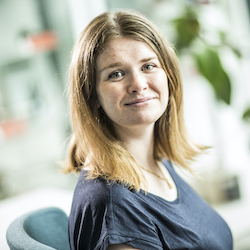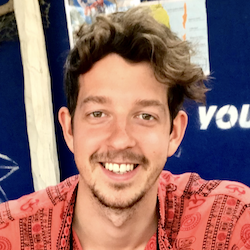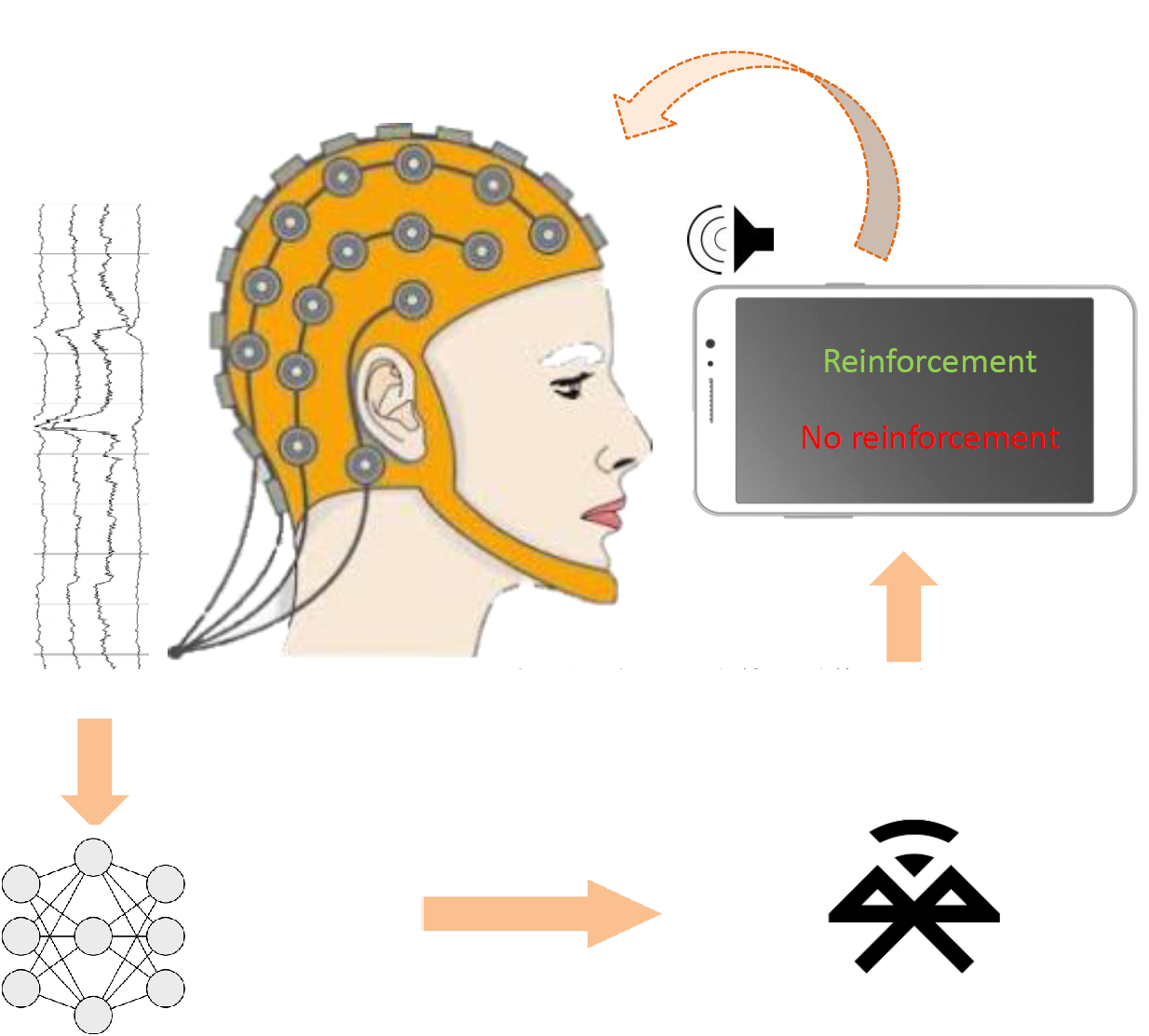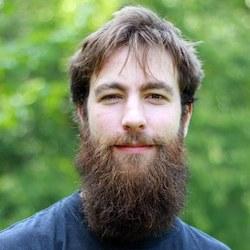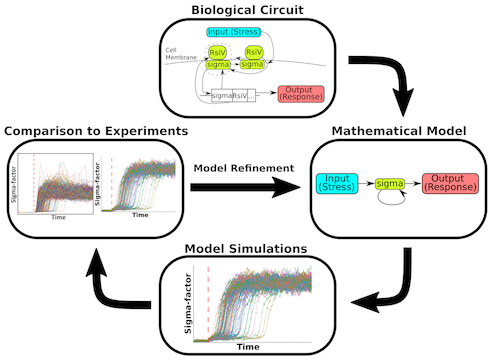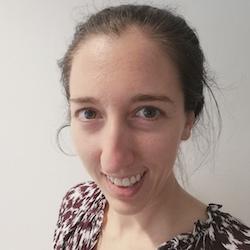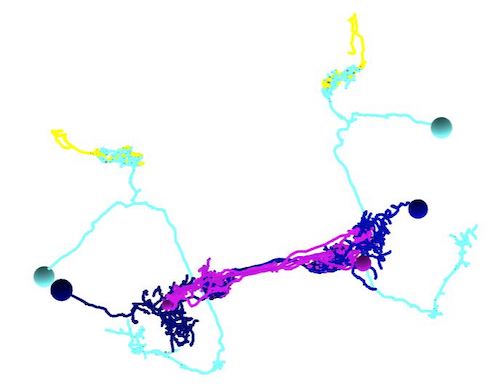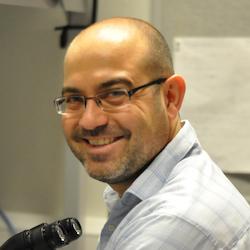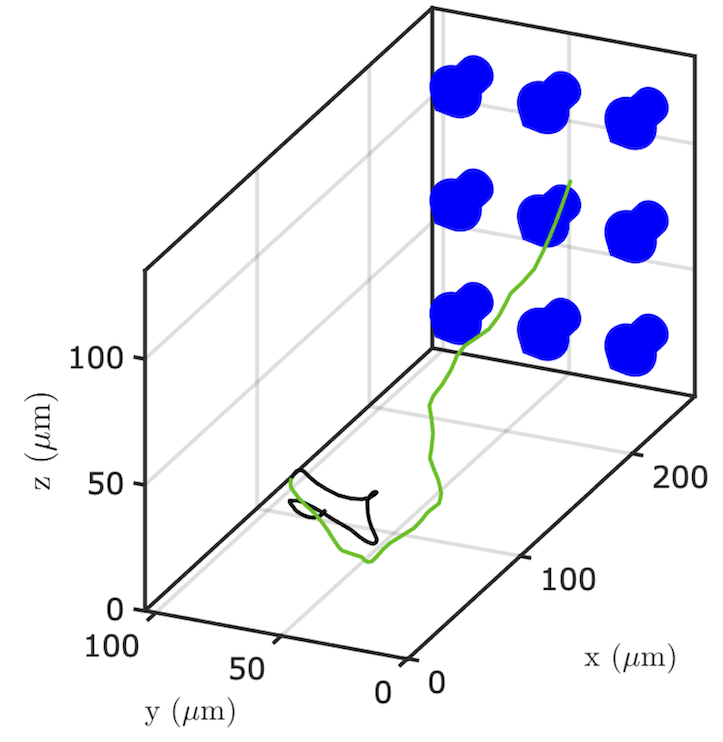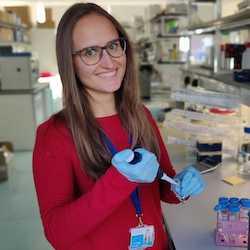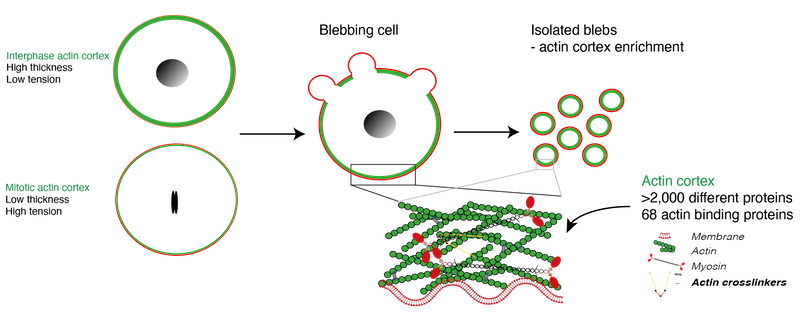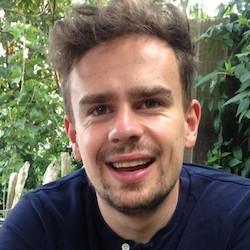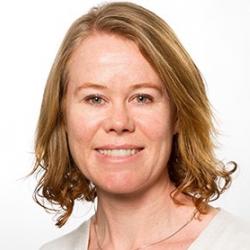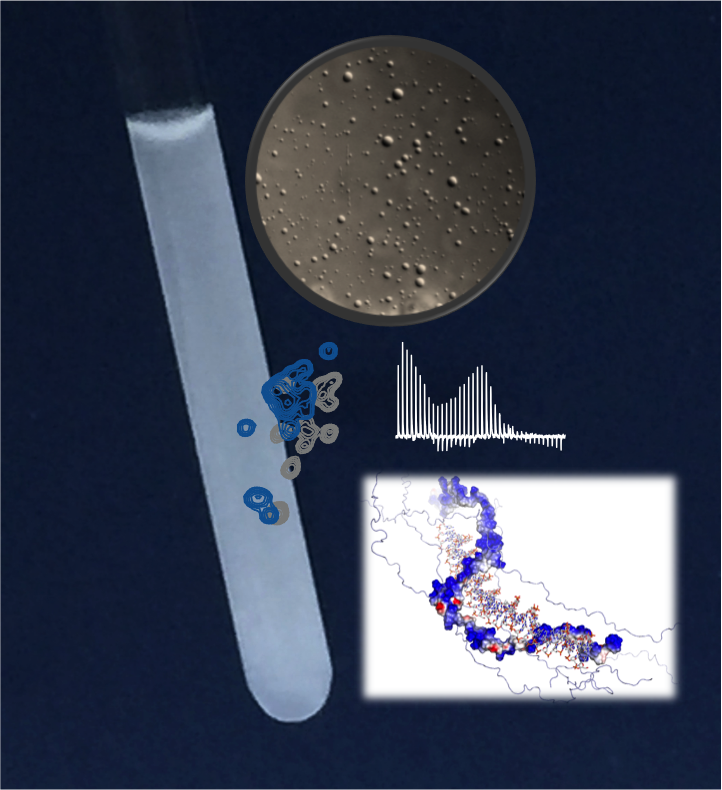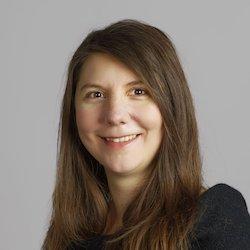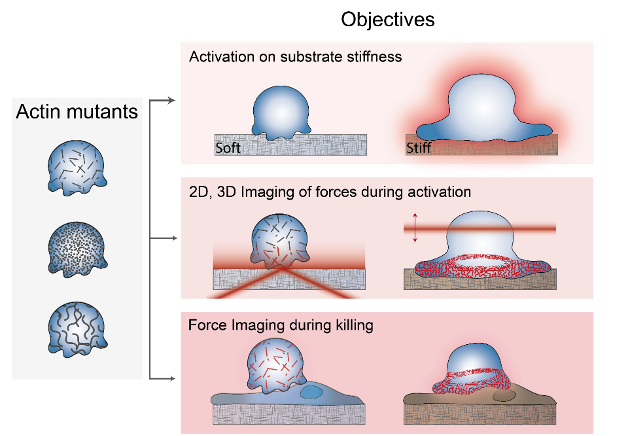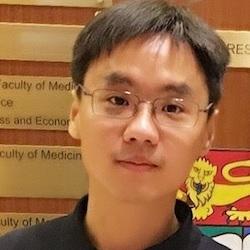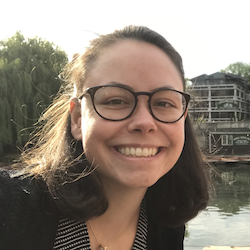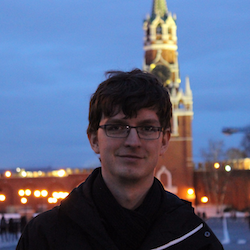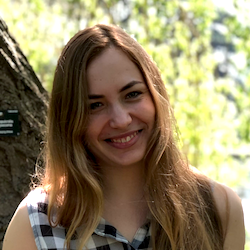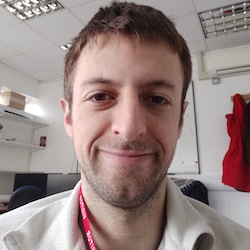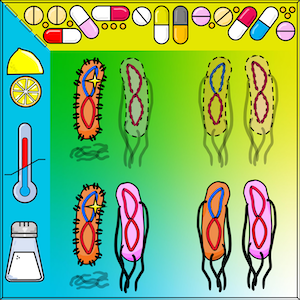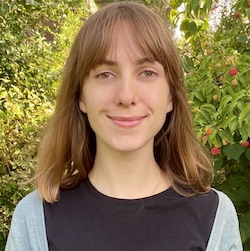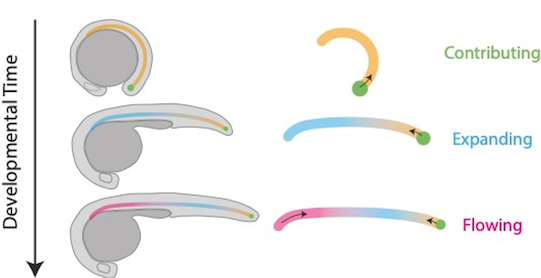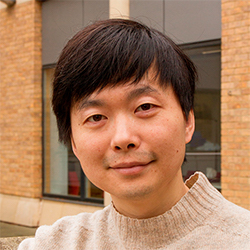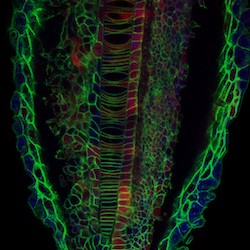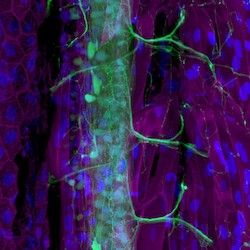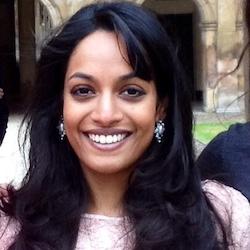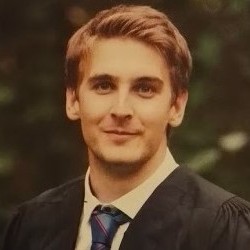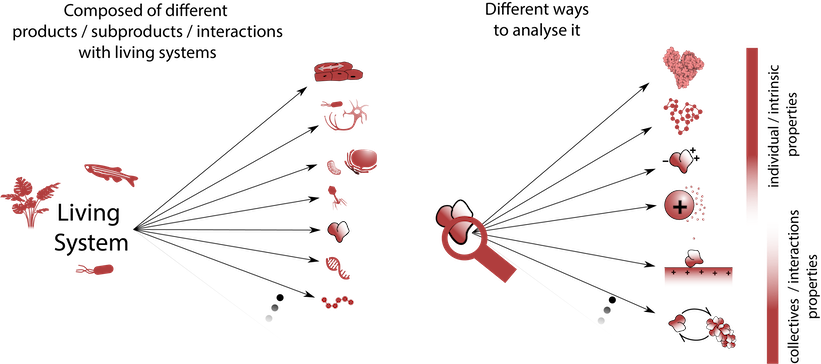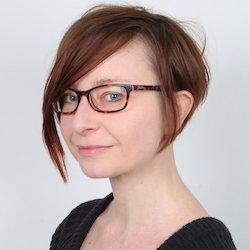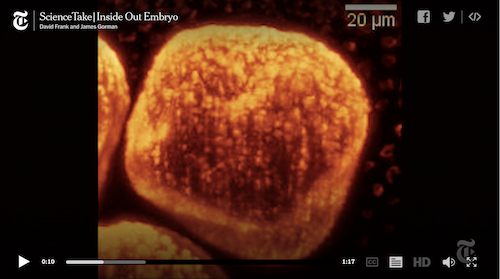Community is a virtual place to meet CPB members
and learn who is doing what and where!
Gemma Bale
Background
My name is Gemma Bale and I’m the Gianna Angelopoulos University Lecturer in Medical Therapeutics, which is a joint position between the Departments of Engineering and Physics. I have recently established the Neuro Optics Lab https://www.neuro-optics.group.cam.ac.uk/ which is a multidisciplinary group working on pioneering new optical methods to monitor the brain. My background is in physics and medical physics, but I consider myself a biomedical engineer now! I’m passionate about communicating science and using public engagement to improve diversity in STEM.
Research
We develop and validate new optical methods to monitor brain function and metabolism non-invasively. Our lab currently focusses on near infrared spectroscopy (NIRS)-based methods to perform in-vivo monitoring of metabolic markers such as haemoglobin oxygenation, mitochondrial function and blood flow. We are interested in pioneering tools and techniques to monitor relevant physiology for both basic science and medical applications. Our work is highly translational and we work closely with clinical partners in Addenbrooke’s Hospital to deliver technologies that progress medical therapeutics in areas such as neurodegeneration and brain injury.
Physical Biology
Physical biology to me is the utilisation of developments in the physics and engineering world, to improve our understanding of biology, specifically in medicine and physiology. I am passionate about developing new methods to uncover aspects of brain function that previously were unable to be studied, for example in real-world scenarios or at the patient bedside.
Figure legend: Typical set up of diffuse optical monitoring using near-infrared spectroscopy methods and measurements.
Alexander Nestor-Bergmann
Background
I’m Alexander Nestor-Bergmann, a Herchel Smith Postdoctoral Fellow in the Department of Physiology, Development and Neuroscience. Following a Masters in Maths and Physics, I became interested in applying and developing the tools from traditional models of passive systems to tackle the new challenges involved in understanding active, living systems. During my PhD, I used discrete mathematical models to characterise the mechanical properties of tissues and explore how external forces can influence cell division. I have been a postdoc in Cambridge since 2018, continually perplexed by tissue morphogenesis.
Research
During development, tissues undergo dramatic reshaping to construct our organs. My current research focuses on developing mechanically grounded models of active cell mechanics to understand how these striking tissue-level deformations are actively driven by the behaviours of individual cells (which are driven by the behaviour of molecules at the subcellular scale). I am particular focused on how the specific localisation of contractile molecules can drive cell-cell rearrangements, changing the positions of cells in a tissue, to reshape the tissue as a whole.
Graphical Abstract
cropped.gif
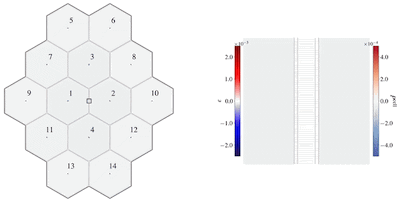
Figure legend: A simulation of an active cell neighbour exchange. The shared edge between cells 1 and 2 has active contractility, which removes the edge and a new contact is formed between cells 3 and 4.
What is physical biology
It’s fun! If physics is concerned with the nature and properties of matter (and energy) and biology is the study of living systems, then physical biology could be the study of the nature and properties of living systems. For me, there is particular focus on the mechanics of living systems.
João Araújo
Background
My name is João Araújo and I am PhD student in the Centre for Neuroscience in Education supervised by Prof. Usha Goswami (Department of Psychology) and co-supervised by Prof. Ben Simons (Department of Mathematics and Theoretical Physics). I have a mixed academic background in psychology, neuroscience and statistics and have done previous work in creating Brain-Computer Interfaces for portable research-grade electroencephalography prototypes used as controls in VR games.
Research
I use a mix of theory and data driven approach to better understand oscillatory processes and entrainment to speech stimuli in dyslexia and developmental language disorder. Using computational modelling / machine learning and insights from physics, I aim to find relevant patterns that will allow the identification of abnormal neural entrainment processes in dyslexic children and create a clinical classifier for this language disorder. Based on these findings, I will create a Brain-Computer Interface based on operant learning to help children self-regulate their brain activity.
Graphical Abstract
Figure legend:
Using a mix of theory and data-driven approach, an AI decoder is created to transform EEG waveform patterns into a biologically relevant metric related to abnormal auditory processing in dyslexia. By using an operant learning paradigm with a Brain-Computer Interface disguised as a game (including a mobile game), dyslexic children may learn how to modulate those brain patterns and potentially improve their phonological processing.
What is physical biology
For me, physical biology is the study of biological systems using rules and methods from physics to uncover novel and disruptive theoretical insights about the inner workings of such systems.
Torkel Loman
Background
My name is Torkel Loman, I’m a PhD student in James Locke's group at the Sainsbury Laboratory. Previously, during my undergraduate and Masters' at Lund University, I studied Applied Mathematics (and some Molecular Biology). I have also been involved in surveys of the European adder (Vipera berus) in southern Sweden.
Research
When bacteria are stressed (which often happens when humans try to kill them, e.g. in the food industry and for healthcare purposes) they respond by producing so-called sigma factors, which in turn activates genes that respond to the corresponding stress. Single-cell microscopy has revealed that sigma factor activity often is very heterogeneous, even across homogeneous populations. In my research, I use mathematical modelling (ODEs and SDEs) to investigate how these heterogeneities are generated. To ensure that the models are well founded in reality I, and my experimentalist collaborators, validate them by comparing the model predictions to experimental measurements.
Graphical Abstract
Figure legend: Sample modelling workflow: An initial model is proposed based on a simplified sigma factor circuit, and is then validated against experiments, possibly including further iterations of model refinement and validation."
What is physical biology?
I have no idea! If someone thinks they know, please tell me. Everyone seems to have a slightly different idea of what Physical Biology mean (admittedly this seems to be the case in many fields). By empirical observation, I have learnt that Physical Biology is usually something I find interesting, and that is good enough for me
Miranda Robbins
Background
I’m Miranda Robbins and following undergraduate studies in Molecular Biology at UCL, I attended the University of Edinburgh to study Integrative Neuroscience (MSc). I joined the EPSRC Sensor Technology and Applications Centre for Doctoral Training at the University of Cambridge, working with the Molecular Neuroscience Group. Currently I am working as an MRC Career Development Fellow at the Laboratory of Molecular Biology, and a visitor to the Department of Zoology in the group of Dr. Marta Zlatic. My key interests are understanding the molecular mechanisms involved in synaptic plasticity and ultimately how these may be altered in different neurological and psychiatric disorders.
Research
On joining the Zlatic lab I will be researching how long-term memories are formed, using the model of Drosophila larvae. This will involve 2-photon microscopy with holography for optogenetic stimulation of individual neurons, and then electron microscopy and computational methods for reconstructing these neural networks.
Graphical Abstract
Figure legend: The neural circuit required for olfactory memory in Drosophila larvae as reconstructed using CATMAID (Saalfeld et al., 2009).
What is physical biology?
Physical biology can be any principle of physics applied to biology, in my work this would include the methods that I use as well as the reconstructions involved for mapping neural circuits.
Kyriacos Leptos
Background
I am Kyriacos Leptos and I am a Senior Research Associate at GK Batchelor Laboratory in the Department of Applied Mathematics and Theoretical Physics. I have a PhD in Genetics from Harvard University and I study cell motility and navigation.
Research
I study the flagellar dynamics of eukaryotic microbes. In particular, I study an organism's response (i.e. modulation of flagellar waveform) as a function of external stimuli in order to achieve favourable navigational behaviour. I am also interested in the molecular players that regulate this modulation of flagellar waveform. Up to date I have been involved in projects which have studied the following behavioural responses: aerotaxis and phototaxis.
Graphical Abstract
The trajectory – including a U-turn – of a phototactic swimming cell as acquired inside the chamber of an in-house built 3D-tracking microscope. The blue arrows indicate the direction of the light, which is turned on at the point in time when the colour of the trajectory changes from black to green.
What is physical biology?
Physical biology is the interdisciplinary science of studying and answering biological questions using the laws and equations of physics and physical chemistry.
Neža Vadnjal
Background
My name is Neža Vadnjal and I am a PhD student in Ewa Paluch’s lab at the Department for Physiology, Development and Neuroscience, the lab moved to Cambridge in 2019. I did my undergraduate degree in Medical Genetics at Queen Mary University of London and in 2016, I joined a PhD programme at MRC Laboratory for Molecular Cell Biology at University College London and the Paluch lab.
Research
The cell cortex is a thin actomyosin network underneath the plasma membrane. The cortex is under contractile tension and gradients in cortical tension lead to cell shape changes. In my project, I want to understand how actin binding proteins control cortex architecture and consequently cortical tension. Using mass spectrometry to run cortices from blebs isolated from mitotic cells (high tension) and interphase (low tension), I identified more than 2000 proteins of which 64 are actin binding. I am focusing on the role of actin crosslinkers, proteins that link two or more actin filaments together, and how their properties especially size affect connectivity of the cortex.
Graphical Abstract
What is physical biology?
Physical biology to me is using physics (concepts and tools) to understand biological phenomena.
Marcus Fletcher
Background
My name is Marcus Fletcher and I am PhD student in Ulrich Keyser's group at the Department of Physics. I studied Natural Sciences here in Cambridge, starting in 2014 and I never left! I went on to specialise in physics. I can remember first being excited by the prospect of applying physics to biological systems when I read 'What is life?' when I was 17 and finally made the leap into the world of biophysics during my masters.
Research
My research aims to investigate and understand the fundamental biophysics of lipid vesicles, in particular I am interested in developing techniques to characterise transport across lipid vesicle membranes. In practice, I spend my time optimising the microfluidic production of giant lipid vesicles (GUVs), designing optical experiments to investigate their properties and developing software to analyse such experiments.
What is Physical Biology?
Physics aims to encapsulate all the relevant information required to understand nature into a set of interpretable mathematical relations. Physical biology, for me, is the belief that complex biological systems can be understood by breaking them into their parts, finding the laws which govern the behaviour of these parts and stitching them back together.
Katherine Stott
Background
I’m Katherine Stott and I run the in-house biophysics facility, and also a small research group at the Department of Biochemistry, in the area of Structural Biology and Biophysics.
Research
Our research is focused on two areas in which disordered proteins are key players in the organisation and regulation of a molecular assembly: (i) gene expression via chromatin (de)condensation, and (ii) signalling via protein-protein interaction hubs. Our aim in each case is to gain an atomic-level understanding of representative complexes, and their underlying thermodynamics, that together will inform on more general mechanisms. The least understood part is almost always the disordered protein. We use a broad methodology, including a range of biophysical methods, solution-state X-ray/neutron scattering and NMR, making extensive use of the Biochemistry Department's in-house biophysics and NMR facilities.
What is physical biology?
As a chemistry graduate, I was trained to apply the laws of physics in a chemistry context, and now I apply them to understand how non-covalent interactions between macromolecules direct their behaviour. The molecules have got a lot bigger, but the principles are the same.
Anna Lippert
Background
I’m Anna Lippert, a Sir Henry Wellcome Postdoctoral Fellow working in the lab of Gillian Griffiths at the CIMR. Before my PhD with Prof. Klenerman in the Department of Chemistry, where I worked on the molecular mechanisms of antibody induced T cell activation, I did my MSc and BSc in Integrated Life Science at the Karl-Friedrich University Erlangen-Nuremberg. During this time, I worked in the group of Vahid Sandoghdar in the Max Planck Institute for the Physics of Light for my Master thesis and Ben Fabry for my Bachelor thesis. Together the background of mechanobiology, lipid systems and light microscopy provided me with the tools I am using now in my fellowship where I study the importance of stiffness sensing in human immune cells.
Research
Immune cells constantly rid our body from malignant or infected cells, however how these cells make the initial decision to activate and kill is still not understood. One factor that gains increasing interest is the ability of immune cell to sense the mechanical stiffness of their environment. During my fellowship I will study the response of immune cells to stiffness and use intracellular force probes to visualize stress in the actin cytoskeleton, an important factor in the killing machinery. In particular I will focus on the activation and killing of T killer cells in the context of different actin-based primary immunodeficiencies.
What is physical biology?
Physical biology to me, means using our tools and knowledge from a traditionally physics background to apply and inform biological questions to understand and discover mechanisms in biology.
Lin Wang
Background
I'm Lin Wang, a Research Associate in the team of Henrik Salje at the Department of Genetics. My research interests include infectious diseases epidemiology and modelling, Bayesian inference, systems immunology, single-cell immune profiling, with applications to arbovirus (e.g. dengue) and emerging diseases (e.g., pandemic influenza, SARS-CoV-2). I was a chargé de recherché in the Mathematical Modelling of Infectious Disease Unit at the Institute Pasteur (Paris) from 2018/09 to 2020/04, and a postdoctoral fellow in the School of Public Health at The University of Hong Kong from 2014/03 to 2017/12. I have a PhD in Electronic Engineering from Fudan University, MSc and BSc in Physics from Nankai University and Southeast University, respectively.
Research
Currently, my main research is to study the antigenic and genetic diversity of dengue virus (DENV) and in particular to elucidate their role in driving DENV’s circulation patterns and disease risk in endemic countries (e.g., Thailand). With granular clinical and virological data, I'm developing a mathematical modelling framework to estimate and predict the population transmission intensity and individual risk of severe disease. Due to DENV's complex immunopathogenesis, there lacks a clinical tool or virological assay for estimating disease risk. Our modelling framework has the potential to fill this gap.
I also led or involved in several international collaborations to decipher the transmission dynamics of SARS-CoV-2. For example, we provided the first empirical evidence that the serial interval distribution of SARS-CoV-2 was not constant but was shortened over time by non-pharmaceutical interventions. It indicates that using real-time estimation of the serial interval can provide more accurate estimates of the reproduction number and better predict epidemic trajectories. More about my research is available here.
What is physical biology?
To me,physical biology aims to elucidate the mechanism underlying complex biological systems. Using mathematical and statistical methods, rich information can be inferred from limited (and often expensive) biological data. Models of physical biology can also provide new insights to improve experimental design and clinical practice.
Carla Mulas
Background
I’m Carla Mulas, a Research Associate in the lab of Kevin Chalut at the Wellcome-MRC Cambridge Stem Cell Institute. I studied Biochemistry at Imperial College London, before doing a PhD in Cambridge in the lab of Austin Smith looking at the early stages of differentiation in mouse embryonic stem cells. After my PhD, I moved to the lab of Jenny Nichols to learn more about embryology and single cell RNA-sequencing techniques. Now, I combine my PhD and postdoctoral experience to ask how, and to what extent, principles borrowed from physics can be used to describe how cells transition from one state to another during development.
Research
I’m currently pursuing two main lines of research. First, we are testing the idea that as a cell transitions from one state to another, there is an increase in the ‘disorder’ of the system, reflected in an increase in gene expression noise. We are studying if this increase in true biological noise occur when cells are changing functional properties (e.g. when stem cells irreversibly commit to differentiation), once we have removed the contribution of asynchrony (since some cells differentiate faster than others) and technical noise. The second project looks at how signalling pathways dismantle one cell identity and assemble the next cell state during differentiation.
What is physical biology?
Physical Biology is the use of approaches initially developed in physics, engineering and maths to investigate biological systems. To me, what most of these approaches have in common is that they allow us to study processes that bridge scales, such as describing how the cytoskeleton generates or resists mechanical forces, or how gene/protein regulatory networks give rise to particular cell behaviours, or how groups of cells coordinate to give rise to tissues. It is an incredibly exciting and highly collaborative field!
Wolfram Pönisch
Background:
Wolfram Pönisch, Herchel Smith Postdoctoral Fellow at the Department for Physiology, Development and Neuroscience. After completing my Master’s in Physics in Leipzig (Germany), I moved to the Max Planck Institute for the Physics of Complex Systems in Dresden (Germany) to obtain my PhD in biological physics under the supervision of Prof. Vasily Zaburdaev and Prof. Frank Jülicher. Using computational and mathematical tools, I developed theoretical frameworks to unravel the role of active appendages (so called type IV pili) in bacterial surface motility, colony formation and microcolony dynamics. In 2018, I joined the lab of Prof. Ewa Paluch, initially at the University College London, and since 2019 at the University of Cambridge.
Research
The cells in an organism exhibit a vast variety of morphologies and changes of cellular state are regularly accompanied by cellular shape changes. This is particularly astonishing since most organisms originate from a single cell. In the group of Prof. Paluch, I am investigating the crosstalk between cell shape and cell state. I am using tools of machine learning to quantify the high-dimensional morphometric features of cells undergoing state transitions. Utilizing this information, I am using mathematical and computational tools to describe the transition dynamics of cell morphologies and cellular state. In close collaboration with experimentalists at the University of Cambridge, I am working on different biological systems, from in vitro cell lines that undergo epithelial-mesenchymal-transitions up to the differentiation of cells within tissues. Besides my work on cell state and fate, I am also interested in the role of aggregation processes in biology, be it proteins or cells, and the mechanics of bacterial aggregates.
What is Physical Biology?
To me, Physical Biology feels like being a child in a toy store: We as biological physicists and physical biologists can choose from a broad range of biological systems and questions and will most likely always find something exciting. With the help of the tools of theoretical physics, we can then answer questions that could not be answered with the tools of conventional biology and can ask new questions that help us to unravel the secrets of the living world.
Aleksandra Jartseva
Background
Aleksandra Jartseva, Laue lab, Department of Biochemistry. I have a BScHons in Biological Sciences (Biochemistry) from the University of Edinburgh. During my bachelor's studies, I worked as an intern in several labs. I studied at various points DNA double-stranded break response in E. coli and also conducted structural studies of the splicing machinery using NMR and DNA damage response in mouse embryonic stem cells. I have also done a rotation project at the beginning of my PhD, characterising HIV protein translation. My current research area is chromatin 3D organisation during exit from naive pluripotency of mouse embryonic stem cells.
Research
In my PhD, I study the principles of chromatin organisation, or rather reorganisation. I am trying to figure out what drives the changes in chromatin three-dimensional fold when mouse embryonic stem cells start differentiating. My primary research tool is microscopy, as we try to follow the arrangement and dynamics of structural proteins in the nucleus during this process.
What is physical biology?
To me, physical biology means quantitative description of biological processes, or perhaps even the way of looking at living things as physical systems. For example, in my work I track the movement of single molecules in live cells and employ diffusion models to describe their behaviour.
Leonardo Mancini
Background
Leonardo Mancini, Department of Physics, Systems Microbiology, Biophysics of bacterial antibiotic survival.
Research
In their >3 billion years evolutionary history, bacteria developed exceptional survival tools, the expression of which they can now tune according to environmental conditions. These adaptations however come at a price and can sometimes expose novel vulnerabilities. My research explores these vulnerabilities and the system-level effects of antibiotics to design treatments that take into account the physiological shortcomings associated to environmental conditions and use antibiotics to push bacterial functions past their tipping points.
What is physical biology?
The best way of answering research questions is to use the most appropriate tools, even if these are traditionally thought to belong to other disciplines. Biological systems are both very large (in terms of number of parts) and very small (in terms of size). For decades, physicists have excelled at developing tools to study problems with the very same characteristics, which now makes mixing the two subjects very rewarding. In the particular case of my research, there is a further overlap, as physical phenomena have an important role in shaping the relationships bacteria have with their environment!
Susie McLaren
Background
Susie McLaren, Steventon Group, Department of Genetics. I studied Cell Biology and Physics for my undergraduate degree at UCL. These two areas were generally taught with very little overlap, however a few biology lectures showed that the areas of physics and biology could be combined in research, encouraging me to get involved with projects at the interface of biology and physics. This interest has focussed my research during my PhD towards understanding the role of mechanical forces in shaping biological structures.
Research
Embryo development is a multi-tissue process - with multiple tissues growing and changing shape as the embryo body plan is laid out. My PhD work has focussed on understanding how tissue morphogenesis is able to physically deform embryos and shape their bodies over the course of development. More specifically, I have investigated the role of the notochord, a tissue possessed by all vertebrates, in straightening and elongating the embryo, using the zebrafish as a model system. Using a combination of light-mediated cell ablation and quantitative analysis of tissue and embryo morphogenesis, I found that the coordination of morphogenetic events in the notochord plays an important role in the physical deformation and shaping of the zebrafish embryo head-to-tail axis.
Graphical abstract
During somitogenesis, as the body is being segmented, the embryo undergoes a change in shape. The expansion of cells in the anterior notochord (blue) and contribution of cells to the posterior end of the notochord (green) play a role in bringing about the straightening and elongation of the embryo. At later stages, the continued expansion of notochord cells leads to notochord cell flow (magenta), contributing to axis elongation post-somitogenesis.
What is physical biology?
To me, physical biology is about using concepts from physics to better tackle complex biological problems that cannot be addressed purely from a biochemical perspective.
Fengzhu Xiong
Background
Fengzhu Xiong, Gurdon Institute and PDN, I was trained in developmental biology, systems biology and imaging in my PhD and explored soft matter physics in developmental biology during my postdoc at Harvard University. My current research area is interdisciplinary tissue morphogenesis.
Research
We identify mechanisms of tissue mechanical regulation and their role in tissue patterning and shape change during early development of vertebrate embryos. We develop tools to measure, model and perturb tissue mechanics in the chicken model system.
What is physical biology?
To me it means an understanding of how nature (biology) both navigates the constraints of physical laws and uses them to achieve amazing structures and functions.
Eva Pillai
Background
Eva Pillai, Franze Lab, Department of Physiology, Development and Neuroscience. During my undergraduate degree, I majored in Engineering and minored in Philosophy (NUS, Singapore). I decided that the brain posed a lot of interesting and unanswered questions, which led me to a Masters in Neuroscience (ANU, Australia). My PhD here in Cambridge is at the intersection of both fields! The key topics of my research are: Developmental Biology, Neuroscience, Mechanobiology, Biophysics
Research
I study the interplay of mechanical and chemical signalling in connecting the nervous system accurately during development. More specifically, I study how axons of neurons from the eye grow towards the visual part of the brain in vivo during development. In my PhD, I found that downregulating a mechanosensitive ion channel called Piezo1 resulted in alterations in the mechanical properties of brain tissue and in a key chemical signalling molecule. Now I am unpicking the relationship between these two parameters!
What is physical biology?
Physical biology is the convergence of the physical and natural sciences. In this field we are trying to frame and understand complex questions on the formation of life and biological processes using approaches and concepts from physics and engineering. Life after all exists in a physical plane and is subject to physical laws, thus the power of applying basic physical principles to understanding complex biological observations could lead us to better understanding of how we and the organisms around us work.
Raphaël Jacquat
Background
Raphaël Jacquat: I am currently doing my PhD within the sensor CDT program at Tuomas Knowles laboratory - Department of Chemistry. I moved to Cambridge after completing a master in physics at ETH – Zürich and my research area is microfluidics and protein characterisation.
Research
I am developing new microfluidic devices to characterise proteins in biologically relevant solutions. More specifically, I am interested in combining existing techniques to separate proteins and then measure their physical parameters. I am currently developing a capillary electrophoresis in combination with a diffusional sizing allowing to measure the hydrodynamic radius and charge of the different components inside the solution. This will help understand protein-protein interactions, in particular protein aggregation. In parallel, I am involved in developing microscope techniques for label-free detection of molecules, such as improving UV-autofluorescence or iSCAT techniques. Finally, during the lock-down of the lab, I helped on the statistical analysis of the prevalence of Covid19 in the great area of Zürich.
What is Physical Biology?
Physical biology is for me one of the largest interdisciplinary research areas. It combines not only physics and biology but also chemistry, engineering and maths/computational science, in order to better understand the living systems. It is a wide field which includes the sub-nano to mili-metric scale and can be focused on individual or collective reactions. In other words, physical biology is the study of all the product/side-product related to living systems using different disciplines. During my master, I decided to specialise in the bio of the physics because I was/am fascinated by the self-construction of the living and how from pure Brownian motion of molecules cells started to be autonomous, eat, grow, replicate. As future direction, I would like to move towards the theoretical approach of ageing and how that associates with self-repairing mechanisms.
Physical Biology by Raphaël Jacquat
Stephanie SMH Höhn
Background
Stephanie SMH Höhn, Biological Physics and Mechanics, Dept. Applied Mathematics and Theoretical Physics, University of Cambridge. Stephanie is a developmental biologist with an interest in mechanobiology. She obtained her PhD in the Department for Cell and Developmental Biology of Plants at Bielefeld University (DE) where she discovered the cellular changes that drive cell sheet folding in the microorganism Volvox globator and some of its relatives. In order to shed light on the mechanics of epithelial morphogenesis she joined the biophysics group of Raymond Goldstein at DAMTP in Cambridge for her postdoctoral research. There she constructed a custom-built light sheet microscope to combine advanced imaging with biophysical and computational approaches. Her future goal is to reveal general mechanical and molecular principles underlying cell sheet folding in organisms across different phyla.
Research
Cell sheet folding is one of the major processes giving tissues and organs their three-dimensional shape. For example, the neural tube, precursor of the spinal cord and brain, and the cavity of our eye are formed by inward folding of sheets of cells. Stephanie is currently using a group of algal microorganisms, the Volvocales, to explore how, where and when the forces are generated that bend and stretch a two-dimensional tissue into the correct 3D shape. Stephanie and her collaborators showed that the fascinating process called inversion, during which volvocalean embryos literally turn themselves inside-out, is a powerful model system as it is accessible to both mechanical perturbation and computational modelling that yields verifiable hypotheses on the underlying forces, stresses and mechanical constraints. For a video introduction see here.
What is Physical Biology?
My take on physical biology is to look at biological processes from an engineering point of view. To ask, how does this work mechanically at the sub-cellular, cellular and the tissue level? How can we get a better understanding of the forces and material properties of biological matter? And how can we use this knowledge to intervene in the case developmental errors and diseases.
Video link


